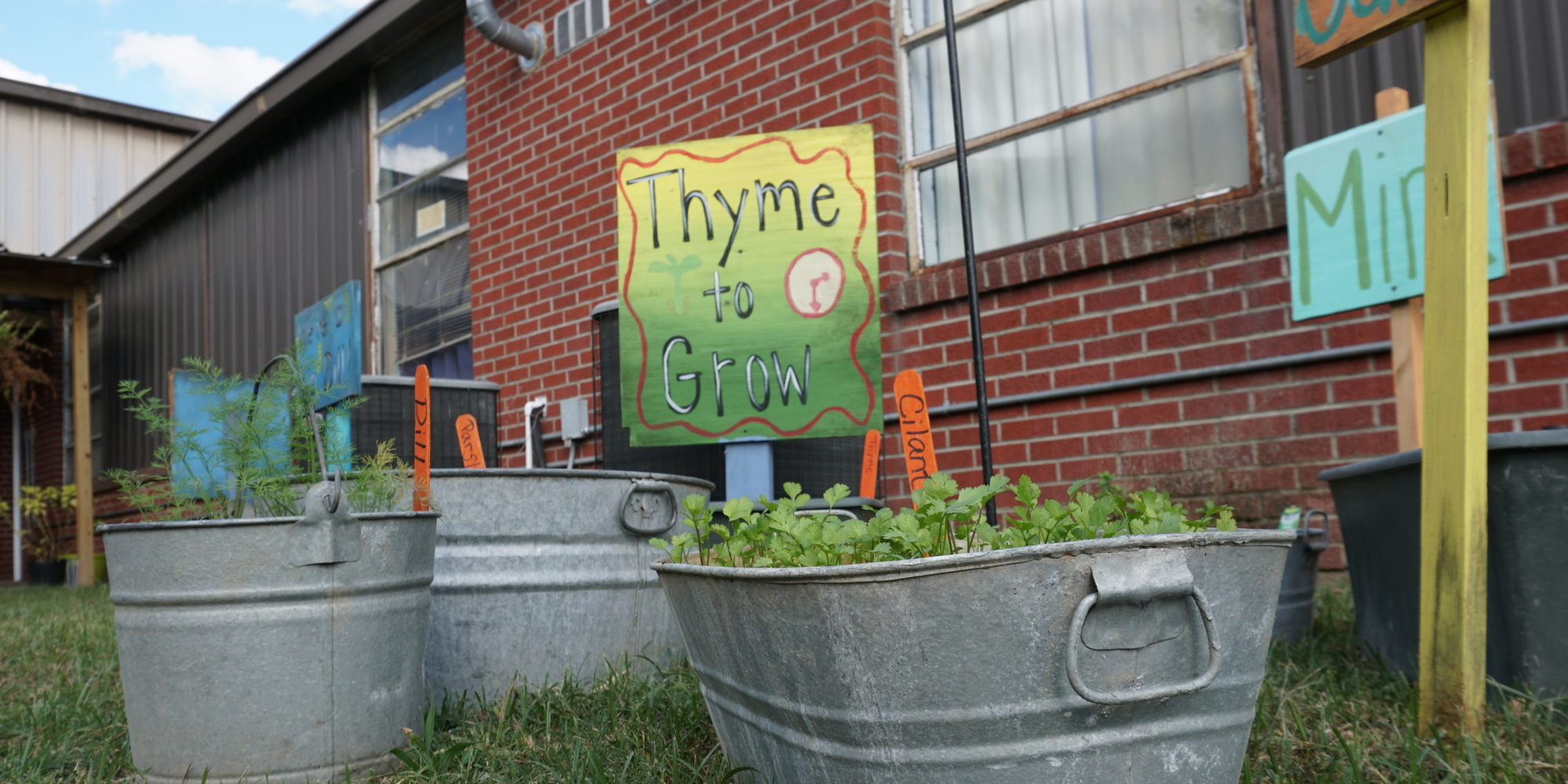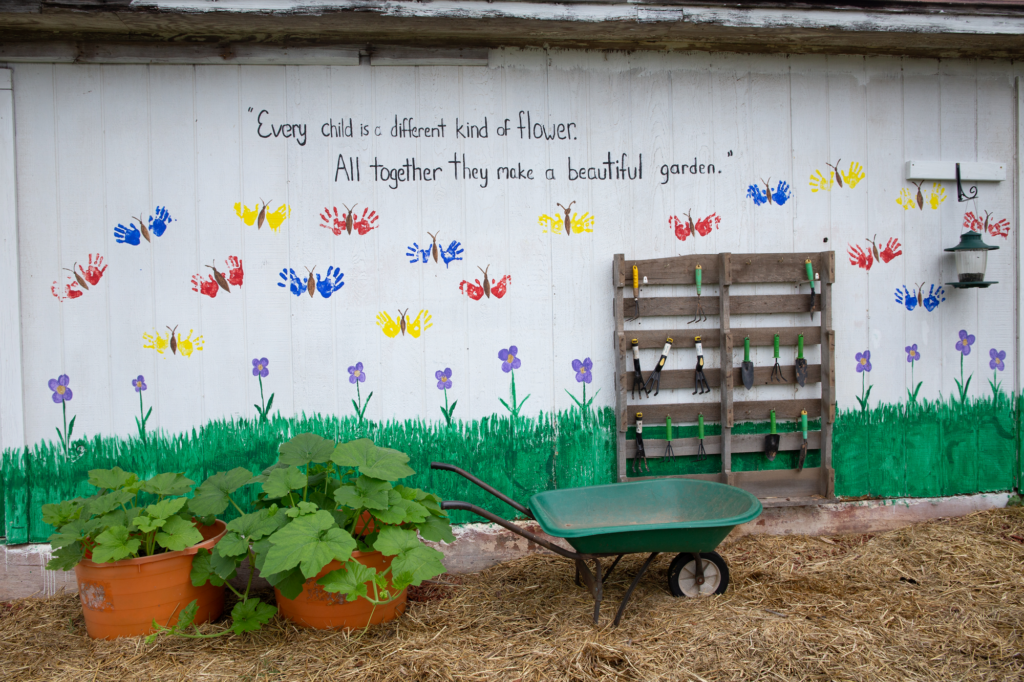What Makes a Great School Garden?
Use these ideas to create a school garden where all are welcome to grow.
Use these ideas to create a school garden where all are welcome to grow.

When it comes to school gardens, the benefits to kids, schools, and communities are limitless.
On a practical level, school gardens can provide fresh produce for the cafeteria, lush plants for pollinators, and beautiful greenery for a school space.
But school gardens are also ideal spaces for experiential learning. They help kids build confidence, develop their agency, and see firsthand the fruits of their labor—quite literally! School gardens are also spaces where kids can move, explore, and dig in the dirt as they learn.
School gardens have been around for at least a century, according to the USDA. And they can blossom in all kinds of places: in both cold and warm climates, and in urban, suburban, and rural communities. The crucial ingredient is a group of passionate people—students, teachers, families, and community members—invested in the garden’s success and sustainability.
If your school community is ready for its own garden space, consider these ideas to grow a school garden that everyone can enjoy.
Thriving school gardens come in all shapes and sizes. Almost any open space can become a flourishing school garden—with the right conditions. Large or small, here are a few things to consider when choosing a spot for your garden:
Sunlight: Most vegetables, herbs, and flowers need a minimum of six hours of full sun. Check possible garden sites for sun exposure at different times of the day, and take note of objects (such as buildings or trees) that might block light in different seasons when the sun is lower or higher in the sky.
Water: The garden should be close to a water spigot.
Drainage: Both slope and soil type affect drainage. Avoid steep slopes. If that’s not possible, consider terracing—turning sloped land into a series of flat steps—or raised beds. Also, try to avoid planting a garden in a low spot where puddles form in wet weather.
Soil: If you are building in a space that has been developed in the past, it is essential to test the soil for lead contamination. Contact your county health department or Cooperative Extension office for information on testing.
Accessibility: Generally, if your garden is a short distance from classrooms, there will be more teacher involvement than if the site is a long trek across the school grounds. A garden close to the classroom makes it more convenient, more visible, and easier to incorporate into the curriculum on a regular basis.
Security: If possible, it can be useful to locate your garden in sight of classrooms and neighbors. Fences and natural borders of plants, if they don’t obstruct visibility and hide intruders, can also provide security. Make use of existing fences, trees, and hedges in selecting your site.

What do the most successful school gardens have in common? In addition to soil, sun, and seeds, here are some elements to consider in creating your garden space. Don’t forget to ask students for their input!
Outdoor class meeting area: Designate a shaded area with adequate seating for class discussion, writing, and drawing. An area with deciduous trees works well—in winter, you have light and warmth; in summer, you have shade!
Small group gathering areas: Open spaces in the garden create room for students to gather in small groups at activity stations.
Garden beds: Make beds no more than three feet wide so students can reach into the center of the bed and work without stepping on the plants and compacting the soil.
Community growing area: These can include a cut-flower growing area, herb garden, market garden, and specialty areas such as a pumpkin patch or plantings that attract butterflies and birds.
Compost area: Composting is a great way to turn garden waste into valuable soil amendments and teach about decomposition. If possible, set aside an area for collecting compost materials and building compost piles. You can never have too much of this important garden ingredient!
Tool shed or storage area: A tool shed or storage area provides a central location where you can clean, organize, and protect tools and equipment. If you plan to build a shed or other structure on your site, be sure to consult whoever in your district oversees building for information about any building codes relevant to your plan.
Sink(s): A sink in the garden makes washing hands and produce much easier. Make sure the water is potable (drinkable). Some school gardens use an old donated sink and build a stand for it with two-by-fours with a drainage pipe running under the nearest tree.
Garden signs: No matter what size your garden is, make a sign to give it an identity within the school and neighborhood. Signs help identify your school garden as an outdoor learning center, announce times the garden is open, and provide rules and guidelines for using the space.
Work tables: Tables are essential for many garden lessons and projects.
If your school doesn’t have a large space for a garden, you can create a productive outdoor garden using containers filled with soil. These container gardens can provide herbs, vegetables, and flowers for students all year long and can be set up over pavement or soil.
You can use all kinds of containers for your garden: fruit crates, buckets, trash cans, baskets, bathtubs, coolers, wheelbarrows, and even old boots! Brainstorm possibilities and gather supplies with students and community members.
If your containers have solid bases, punch or drill holes in the bottom for drainage. Fill containers with a light planting mix rather than soil. And choose your plants carefully; consider small plant varieties and shallow-rooted crops such as lettuce, spinach, onions, strawberries, and herbs.
If space or climate make it impossible to set up an outdoor garden, consider an indoor container garden! Most windowsills won’t receive enough light to grow vegetables, but may be able to successfully grow a variety of houseplants; if you want to grow vegetables, flowers, or herbs, hang fluorescent lights over your indoor garden.
You’ll find these tips and more in our Program Guide, where information about school gardens has been adapted with permission from Life Lab and the Collaborative School Garden Network for our AmeriCorps members.
Let us know what else you’ve learned about school gardens by tagging us on social @foodcorps!

Our 2024 Child Nutrition Policy Year in Review

9 Thoughtful Holiday Gifts Made by FoodCorps Alumni

The Policy Brief, Fall 2024: After the Election